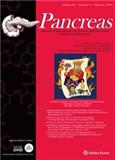| 投稿方式:官网投稿 |
- 栏目频次
- 单位占比
-
热词

-
更多
期刊简介
- PANCREAS《胰腺》(一年10期). Pancreas provides a central forum for communication of original works involving both basic and clinical research on the exocrine and endocrine pancreas and their interrelationships and consequences in disease states. This multidisciplinary, international journal covers the whole spectrum of basic sciences, etiology, prevention, pathophysiology, diagnosis, and surgical and medical management of pancreatic diseases, including cancer.
-
基本信息
- 期刊名称:PANCREAS《胰腺》
- 主管单位:《胰腺》
- 主办单位:PANCREAS
- 国内刊号:
- 国际刊号:ISSN 0885-3177;EISSN1536-4828
-
- 出刊日期:http://www.lww.com/
- 期刊定价:0
-
- 邮发代码:4区
-
- 所在省区:美国
- 邮政编码:
- 联系地址:TWO COMMERCE SQ, 2001 MARKET ST, PHILADELPHIA, USA, PA, 19103
-
投稿信息
-
- 学科分类:
- 版面费用:8.60%
-
- 字数要求:0
- 查重要求:-
-
- 复合因子:0
- 综合因子:0
-
- 审 稿 费:否
- 稿费:否
- 本刊可发:0
- 特殊属性:英语
-
联系方式
- 投稿网址:http://www.editorialmanager.com/pancreas/default.aspx
- 官网网址:
- 电话传真:
- 电子邮箱:
- 微信公众号:

